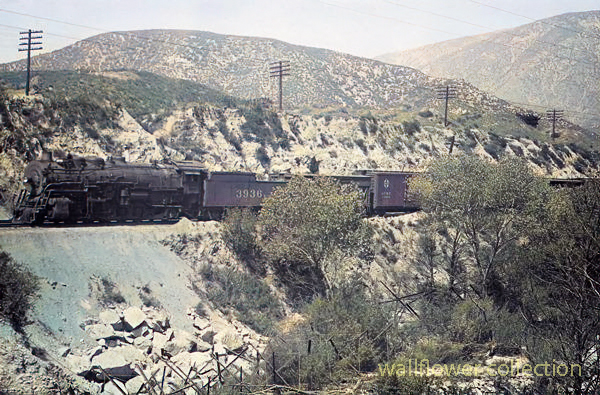/cajon-pass/railroad/
The Cajon Pass is a significant mountain pass in Southern California, USA, and it has a rich history when it comes to railroads. It is a crucial transportation route for both freight and passenger trains.

Here’s some information about railroads in the Cajon Pass:
- History: The history of railroads in the Cajon Pass dates back to the 19th century. The first railroad line through the pass was the California Southern Railroad, completed in the 1880s. It was later acquired by the Atchison, Topeka and Santa Fe Railway (ATSF).
- Santa Fe Railway: The ATSF (Santa Fe) significantly developed the Cajon Pass as a major transportation route. They constructed numerous tracks, tunnels, and bridges to facilitate the passage of trains through the rugged terrain of the pass.
- Union Pacific: Union Pacific (UP) also operates through the Cajon Pass. UP and BNSF (Burlington Northern Santa Fe) are two major freight railroads that use this pass for transporting goods between the West Coast and the rest of the United States.
- Passenger Rail: Besides freight, passenger trains use the Cajon Pass. Amtrak’s Pacific Surfliner and Metrolink commuter trains provide passenger services in the region, connecting cities like Los Angeles and San Bernardino.
- Cajon Pass Railfan Locations: The Cajon Pass is a popular spot for rail enthusiasts (railfans) to watch and photograph trains. There are various well-known locations, such as Sullivan’s Curve and the Hill 582 Overlook, where railfans gather to enjoy the sight of trains traversing the pass.
- Modern Operations: The Cajon Pass remains a vital artery for transporting goods between Southern California and the rest of the country. Freight trains of various lengths and configurations, including long double-stack container trains, can frequently pass through the area.
- Upgrades and Maintenance: Railroads invest in upgrading and maintaining the tracks and infrastructure in the Cajon Pass to ensure safe and efficient rail transportation.

Please note that while this information provides an overview of railroads in the Cajon Pass, there may have been developments or changes in the area after my last knowledge update in January 2022. It’s always a good idea to check with local authorities or rail companies for the most up-to-date information on rail operations in the Cajon Pass.